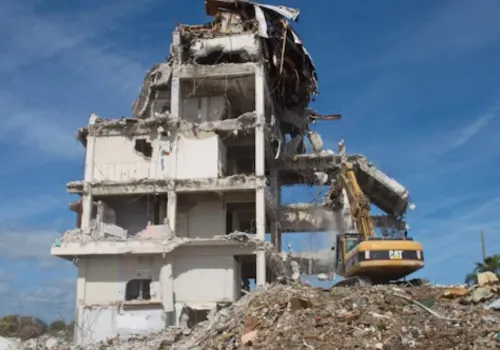
Office building conversions are ramping up across the United States as cities and property owners seek to repurpose underused space in the face of persistently high vacancy rates. But the trend is unfolding unevenly, with structural challenges, rising costs, and aging infrastructure leading many buildings to be slated for demolition instead, according to new reports from CBRE and Yardi.

Conversions and demolitions are now expected to outpace new office construction in 2025, helping to ease oversupply in a market still recovering from the pandemic-era shift to hybrid and remote work. According to CBRE’s June 3 report, 12.8 million square feet of office space is forecast to be converted to other uses this year, while another 10.5 million square feet will be demolished. That’s more than the 12.7 million square feet of new office space expected to be delivered during the same time frame.
“While impactful at the local level, [office conversions remain] a modest contribution to the national housing supply,” the firm said.
The pipeline of office conversions either planned or underway in the U.S. grew to 81 million square feet across 44 markets by May 2025, up from 1.7% to 1.9% of total U.S. office inventory in just six months, according to CBRE. Yardi also noted the growing trend in its June 2025 National Office Report, stating that high vacancy rates, which held steady at 19.4% in May, are driving many building owners to act.
Notably, over 70% of office conversions by square footage are being turned into multifamily housing. This shift is driven by persistently strong performance in the multifamily sector, including lower vacancies and higher rents, and by municipal incentives meant to spur housing production and raise tax revenues.
Office-to-hotel conversions have also grown, now making up 8% of total conversions, while conversions to life sciences—once a booming segment during the pandemic—have declined.
Still, not every office tower is a good fit for adaptive reuse. According to CBRE, buildings from the 1970s and 1980s often feature large, inefficient floorplates that hinder their transformation into residential layouts. These older properties account for more than half of demolitions but only 35% of conversions. “Building size and location, rising construction costs, less labor availability and persistently high interest rates” are all adding complexity to the conversion equation, CBRE said.
Execution also varies widely by city.
In New York, where demand for housing remains high and office vacancy rates are lower, the city has taken an aggressive approach to enabling conversions. Manhattan leads the nation with 10.3 million square feet of planned or active conversion projects. CBRE credits both market demand and policy shifts like Mayor Eric Adams’ “City of Yes for Housing Opportunity,” which is reforming zoning laws to make conversions easier.
“We are seeing more proposals each year,” said CBRE, noting that between 2018 and 2024, the U.S. averaged just 58 office conversions annually. In 2024, that number jumped to 94, totaling 13.1 million square feet. This year, the firm expects 68 projects covering 12.8 million square feet to be completed.
Other cities are also taking bold steps. Boston has 15 office-to-residential conversion projects in the pipeline as of May, per Bisnow, and the state of Massachusetts launched the Commercial Conversion Initiative in March. The initiative includes up to $1 million in planning funds and additional capital to help building owners in cities like Boston and Worcester pursue adaptive reuse.
Meanwhile, San Francisco—home to one of the highest office vacancy rates in the country at 28.4%—has rolled out its own Commercial to Residential Adaptive Reuse Program, which includes tax waivers and fee reductions. A new downtown revitalization financing district is also in the works, aimed at recycling property tax gains from conversions into development incentives.
“With the destruction of office values being realized, it now is up to cities to incentivize conversions to maximize potential, or at the very least, reduce the red tape and regulations that make an already difficult project even harder,” said Peter Kolaczynski, associate director at CommercialEdge.
Although conversions alone won’t resolve the nation’s housing crisis or fix the imbalance in the office market, they are proving to be a key strategy for cities hoping to adapt aging downtown cores to 21st-century needs.
Originally reported by Joe Burns in Construction Dive.